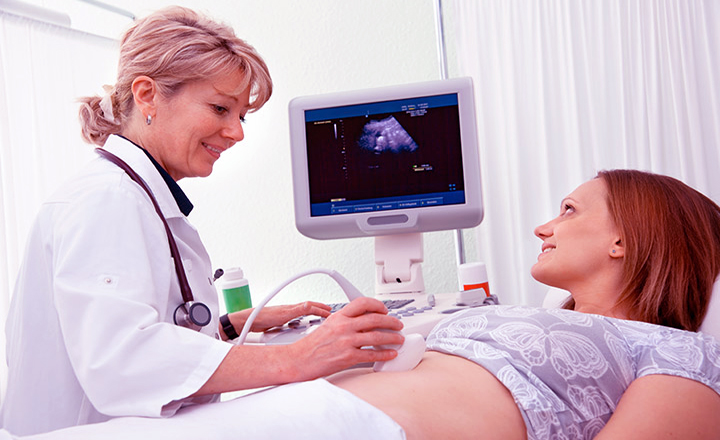- +919216504338
- sale.olfemycare@gmail.com
Progesterone And Its Usage
Progesterone And Its Usage

Progesterone And Its Usage - Progesterone is utilized in women who use conjugated estrogens after menopause to help prevent changes to the uterus or birth canal. Proper control of the menstrual cycle might also aid women who are menstruating but experience irregular cessation of their periods. In this blog, you will get all the important information regarding Progesterone And Its Usage.
What Is Progesterone?
Progesterone is a steroid hormone that belongs to the class of hormones known as "progestogens," or hormones that naturally operate similarly to progesterone. Synthetic hormones called "progestins" work equally to progesterone. The corpus luteum in the ovary secretes most of the progesterone during the second part of the menstrual cycle. It's essential for maintaining the menstrual cycle and the initial few months of pregnancy.
Ovulation, which happens around day 14 of the menstrual cycle, releases one egg from the ovary. The remaining ovarian follicle that held the developing egg becomes the "corpus luteum," which gets its name from the way it looks and means "yellow body." Progesterone and, to a lesser extent, oestradiol are secreted. Should the released egg be fertilized, progesterone primes the body for pregnancy. A new menstrual cycle starts, the egg disintegrates, and progesterone output falls if it is not fertilized.
If the egg is fertilized, progesterone stimulates the development of blood vessels in the endometrium, the lining that lines the womb, and endometrial glands to produce nutrients that nourish the growing fetus. Progesterone facilitates the implantation of the fertilized egg into the uterus and helps to maintain the endometrium during pregnancy after fertilization. Throughout the early stages of pregnancy, progesterone—which is still produced by the corpus luteum—is essential for sustaining the pregnancy and fostering placenta development. The placenta experiences a "lute-placental shift" between weeks 8 and 12 of pregnancy, during which it takes over responsibility for producing progesterone.
What Is The Uses Of Progesterone
Progesterone is a hormone that is found naturally and is vital for many physiological processes, particularly those involving the female reproductive system. It is typically produced in the ovaries, placenta during pregnancy, and adrenal glands. It can be used to manage menopause, be a significant component of reproductive therapy, and maintain menstrual health.
Treatment of Gynecological Conditions
Progesterone is used to treat a number of gynecological disorders, such as endometriosis, irregular menstrual periods, and amenorrhea (lack of menstruation). It lessens the growth of endometrial tissue and regulates menstruation, which helps to relieve pain and other symptoms related to these disorders.
Menstrual Cycle Regulation
By preparing the endometrium, or lining of the uterus, for a possible pregnancy following ovulation, progesterone aids in the regulation of the menstrual cycle. It prepares the uterine lining for the implantation of a fertilized egg by stabilizing it. Progesterone levels fall in the absence of pregnancy, causing menstruation.
Menopause and Hormone Replacement Therapy
Menopausal women on hormone replacement treatment (HRT) are administered progesterone to help with symptoms such as mood swings, hot flashes, and night sweats. Endometrial cancer is often treated with estrogen to counteract its effects and reduce the risk of the disease because estrogen alone can increase the condition.
Pregnancy Support
Progesterone is essential to the health of the uterine lining and the prevention of contractions, both of which contribute to the sustainability of the pregnancy. It is frequently recommended to improve the chances of a successful pregnancy in cases of recurrent pregnancy loss or while using assisted reproductive technologies like in vitro fertilization (IVF).
Contraception
A major component of various hormonal contraceptives, such as tablets, injectables, and intrauterine devices (IUDs), is progesterone. It prevents implantation by thickening cervical mucus, impeding sperm motility, and thinning the endometrial lining.
How Is Progesterone Controlled?
An increase in luteinizing hormone synthesis by the anterior pituitary gland results in the formation of the corpus luteum, which comprises the majority of the progesterone gland. This usually takes place on day 14 of the menstrual cycle and helps the corpus luteum to form from the remaining follicle and the release of an egg from the ovary (ovulation). Progesterone, which is secreted by the corpus luteum, primes the body for pregnancy. The corpus luteum disintegrates and progesterone synthesis declines if the egg is not fertilized and no embryo is produced.
The cells surrounding the early embryo, which will eventually give rise to the placenta, will secrete human chorionic gonadotrophin if the ovulated egg is fertilized and produces an embryo. This hormone and luteinizing hormone share a very similar molecular structure. The corpus luteum does not degrade and continues to produce progesterone until the placenta is developed because it can bind to and activate the same receptors as luteinizing hormone.
Conclusion
So, here we listed all the important details regarding Progesterone And Its Usage. If you are looking for the best gynaecological pharma company in India then get in touch with Olfemy Care. They are one of the leading ISO-certified pharma companies in India.
Frequently Asked Questions (FAQs)
Question 1. Which is the best gynecological pharma company in India?
Answer. Olfemy Care is one of the best gynecological pharma companies in India.
Question 2. What is the main use of progesterone?
Answer. The main use of progesterone is to organize the endometrium for a fertilized egg to implant and grow.








